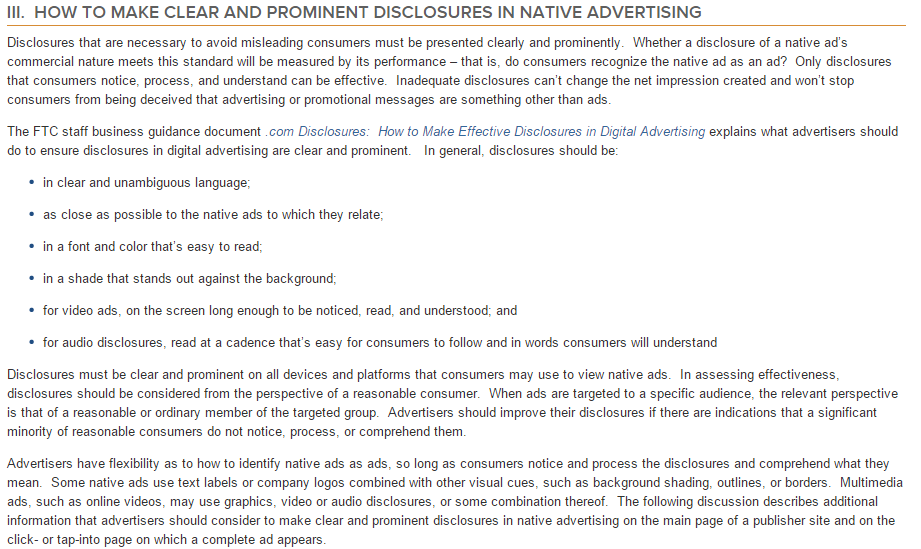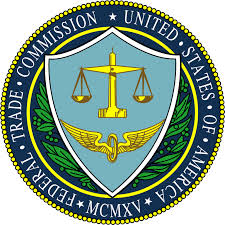The FTC released their updated native ad guidance for business (Native Advertising: A Guide for Businesses) on December 22, 2015. With it came a stern warning about upcoming FTC enforcement in the coming year. There hasn’t been much response in the press, and we have not seen a ton of enforcement since then, but there have been crackdowns.
Ad Week published an article citing the IAB’s concern over some items.
And yet in the same article the publishers interviewed seemed to think they are already doing what they should be doing.
Are they?
And is there reason to be concerned?
Marden-Kane has already posted a few articles about our recommendations to stay on the FTC’s good side. From a promotional marketer’s perspective, we believe every marketer should be paying very close attention and ensuring they follow the newly released guidance.
From a broad perspective you must still do this:

But in the guidance that follows, they get more specific. And this is where we see brands and ad agencies have a huge potential to trip up. We talk to a lot of clients that think they are already in compliance, but they are not.
Here are some things that we see could be an issue in this newly released guidance:
1. Your interpretation of “prominent placement” may not match the FTC interpretation.
The guidance examples talk about putting ad disclosure in plain site, at the top or above the ad – which seems easy enough — but if the ad’s focal point is an image or graphic it needs to go on the graphic instead of, or in addition to the ad itself, depending on a variety of factors. And they have a whole section of examples about what to do if there are multiple native ads on a page– including my favorite advice to “make it obvious to consumers that the disclosure relates to each of the native ads in the grouping, such as through background shading that has a clear outline or a distinct border that sets off the native ads from other content items on a site.”
(Background shading? Distinct borders? I think I can hear web designers everywhere crying out in agony over this one.)
All of the examples, when you boil it down seem to be saying that “ad” at the top of the page may not be enough. Your best bet for every native ad is to do some testing to see what the user looks at first – and then put disclosures there (and there, and there…). It may seem redundant, but better safe than sorry.
2. Call it what it is.
Some publishers get fancy and call native ads “promoted content,” “sponsored stories” or other creative names. You will need to stop that according to the FTC. It needs to say what it is: an ad. “Advertisement” or “Paid Advertising Content” is what they want us to say. So say it that way. Don’t be fancy.
3. Disclosures must be present and intact in SEO and social shares.
The disclosures must be set up so that if people share or republish your content, the disclosures get shared too. This is the one that could really get people in trouble. This is what the FTC says you should do:
“Disclosures should remain when native ads are republished by others.
Advertisers should maintain disclosures when native ads are republished by others in non-paid search results, social media, email, or other media. In non-paid search results, consumers are more likely to notice a disclosure if it’s placed at the beginning of the title tag for a native ad’s search listing. Similarly, URL links for posting or sharing in social media or email should include a disclosure at the beginning of the native ad’s URL. In some circumstances, native ads for republishing in other media may include other distracting elements such as webpage snippets, images, or graphics. In placing disclosures, advertisers also should consider how these additional visual elements might influence where consumers look before they click on native ads.”
How many of you know how to or have the ability to embed the word “advertisement” in the URL? Or can embed the disclosure in the page title tag or image tags? The FTC implies that they want you to figure it out and make it happen – so unless you are a WordPress whiz or you know how to code html, you better get cozy with your technical team that may have control over these things so they can make this one happen.
The next time you want to run a native ad, consult the FTC guidance and make sure you are in compliance. The FTC published a pamphlet for influencers called “Disclosures for Social Media Influencers” in November 2019 which should be reviewed as well. And if you get confused, contact us! We can help sort it out and make you compliant.
To read more posts by Marden-Kane, please visit our main blog page or subscribe to our email list.

